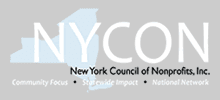Last month, I was brought in to speak to arts groups and government and business leaders in Amsterdam; other Americans for the Arts staff members went or will go to Brussels, London, Korea, and Germany just this fall. Each of these countries wants to learn how the arts industry in America is supported and how private sector giving to the arts works. They are especially curious about how business donations "flow" into the bank accounts of U.S. arts organizations, and to capture the compelling arguments that motivate elected officials to "shower" the arts with public dollars and supportive policymaking in America.
What is going on? World governments are increasingly excited about the economic power of the arts and the value of cultural exchange in a changing world. Because the prodigious levels of government support in Europe and Asia are diminishing, they want to better understand our American advocacy techniques. And as they observe the sea of corporate logos on the backs of most U.S. performing arts programs, they want to know America's secret to eliciting substantial business support for the arts.
However, the leaders from these other countries are often quite disappointed when I tell them that the result of our mightiest, most sophisticated advocacy efforts generates just 9 percent of the total income for U.S. nonprofit arts organizations. Equally disappointing is that private sector support in America is only 31 percent, mostly from individuals. Business support -- despite all the logos and brand recognition -- is only about 5 percent. Yet these foreign leaders and delegations keep coming because they see the breadth of creative and innovative arts organization we have here. They see the freedom of ideas, the variety and the sheer pluck and entrepreneurial spirit of America's arts community.
In September 2009, at the Sundance Preserve, Robert Redford and I convened our fourth National Arts Policy Roundtable for CEOs, elected officials and opinion leaders to discuss how the arts strengthen 21st century global communities by helping create better understanding and stronger relationships between the U.S. and the world .
Thinking about this 21st century global marketplace, four key cultural imperatives jumped out:
- The arts are a global economic force.
- The arts are an aggressive part of today's international competitive marketplace.
- Improved cultural understanding is essential in international dialogue.
- The arts make dramatic contributions to our national security.
The report complements what has been a recent growth of dialogue and interest in making a case for the strength of the arts in U.S. diplomacy and with key decision-makers. Margaret (Peggy) Ayers at the Robert Sterling Clark Foundation has pioneered groundbreaking research on our private sector's role in supporting U.S. cultural exchange. Former Congressman John Brademas, with his Brademas Center for the Study of Congress' Project on Cultural Diplomacy at NYU, is spearheading an effort to reinvigorate Congress' role in supporting the arts in our cultural diplomacy efforts.
From the Huffington Post. Read more here.













No comments:
Post a Comment